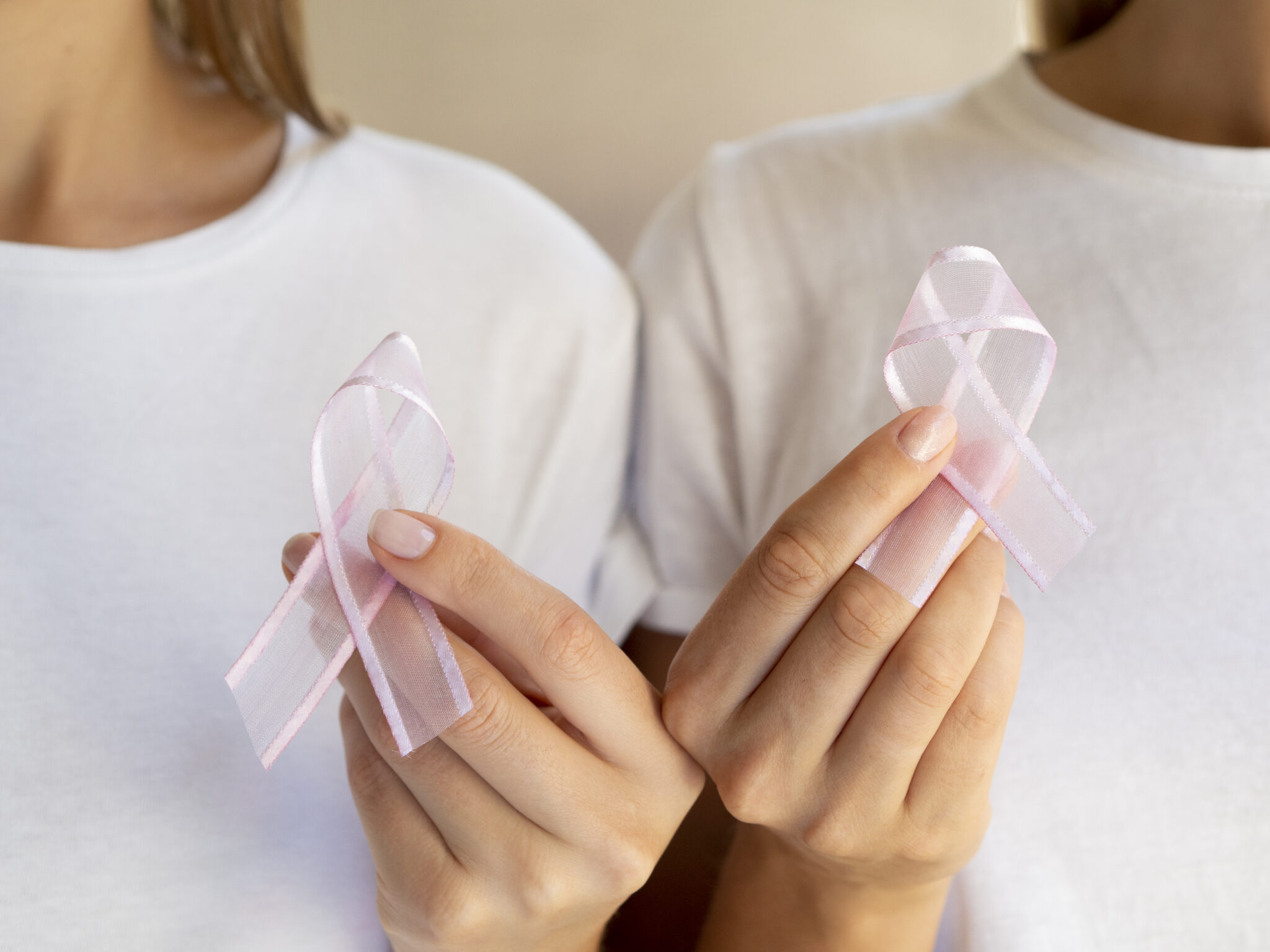Breast Cancer Awareness Month has drawn to a close, but the time to be paying attention to the health of your breasts isn’t just during October, it’s all year round. While breast cancer is more treatable and has a higher survival rate than ever before, it’s still best to catch it as early as possible, meaning you should be extremely conscious of any potential symptoms, including pain and changes in your breasts.
The symptoms of menopause and the signs of breast cancer can occasionally overlap. As your body enters the early stages of this transition, changes to your breasts are common, and it can be hard to tell what’s normal and what is a cause for concern. To be safe, it’s best to make sure you get your regular mammograms and perform your monthly self-exams. These are some normal breast-related symptoms of menopause, and some other ones that should warrant a check with your doctor!
Normal Menopause Symptoms
Pain or Tenderness
Any time your hormones get out of balance, whether for an oncoming period, a new pregnancy, menopause, or a whole host of other reasons, your breasts can feel sensitive and sore. During menopause, it becomes less predictable than it was with PMS. Take note of any pain or tenderness for good measure, but unless it’s severe or persistent, it’s usually not anything to worry about!
Changes in Size and Shape
The dropping levels of estrogen in your body as you enter menopause can affect the size, shape, and look of your breasts. You may notice that they lose density and fullness, and they may appear to be a completely different size or shape than they were when you were younger, especially if you’ve breastfed children in the past. These changes are normal and many women experience them during menopause.
Lumps or Masses
Feeling a lump or mass in your breast is enough to get any woman’s heart racing, but not every lump means cancer. Cysts are a common cause of breast lumps and are nothing to be concerned about, especially if you’ve been performing your monthly self-exams over the years and you know that you’re prone to this kind of mass. Lymph nodes also might feel like a small lump but are perfectly normal. However, other kinds of lumps can be dangerous– keep reading below to learn how to tell the difference.
Talk to Your Doctor
Hard or Fixed Lumps
Lumps in your breast that are soft, have defined margins (i.e. edges that are regular and easy to feel) and are mobile, meaning they can be moved around by touch, are usually benign and not dangerous to your health. You should still discuss them with your doctor if they concern you, but they don’t typically indicate cancer.
Lumps that are hard, have irregular borders, and are fixed (meaning they can’t be easily moved by touch) can be signs of breast cancer. If you find a lump, mass, or growth in your breast that fits this description, you should inform your doctor of it right away.
Nipple Changes or Discharge
Changes in the shape and size of your breast are normal during menopause, but you should be very aware of changes in your nipples, particularly if your nipples invert suddenly (or start pointing inwards when they used to point out). Unexplained nipple discharge is also a sign that something is amiss and should be discussed with your doctor.
Skin Changes
A skin effect called “orange peeling” is a common sign of breast cancer. This means that the skin on a particular area of your breast takes on a dimpled appearance, like the skin of an orange. This is something you should look out for when you perform your regular self breast exams. You should also keep an eye out for any redness, rashes, or irritation on the skin of your breasts. Some kinds of cancer won’t cause a lump but will present with these symptoms instead, and any unexplained skin irritation on your breasts is something to tell your doctor about.
Lopsided Size or Shape Changes
For the most part, as long as changes in the size, shape, and appearance of your breasts are symmetrical, they’re not anything to be too worried about. However, if you notice a sudden change like a swelling or shrinkage of the breast on one side but not the other, it’s definitely something to make a note of and get checked out.
The changes that occur in your body during menopause are easy to get scared by. It’s a time when a lot is shifting and altering, and it’s only natural to be concerned about your health. However, if you keep in mind what’s considered a normal breast change and what’s not when it comes to menopause, it should help to set your mind at ease. If you want to learn more about women’s health and taking care of yourself during menopause, continue to read our blog here at Renewed Vitality!





